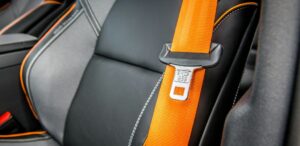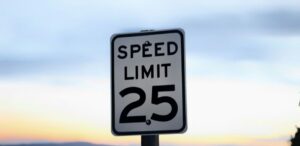It is hard to believe snow is falling Texas this winter. Texans are a tough lot yet most of us are not accustomed to driving on snow and ice. If a driver is not careful during periods of inclement, there is a good chance you will be involved in an auto accident. You want to do your part to try to stay safe. Prepare for the weather elements, leave early when there is inclement weather and keep your focus on the road. Cell phones, music and the radio can be particularly distracting when a person is trying to stay in your lane and avoid contact with other vehicles during the harsh weather. Follow the tips outlined below and you will stand that much better of a chance to keep your vehicle in pristine condition and your passengers safe.
Recognize the Risk Posed by Inclement Weather
Even if you are confident in your ability to drive in the snow, rain, sleet and other nasty conditions, do not assume you will be able to make it to your destination without trouble. You might be the best driver in the world and still end up in an accident simply because others drive while distracted or fail to take the proper precautions. Consider the following statistic from the National Highway Traffic Safety Administration: One-quarter of all automobile accidents occur when the weather is bad. Though Texas usually has sunny skies, our winters have the potential to make the roads quite dangerous. The threat of rain looms across the entirety of the year. As an example, the city of Houston receives an average of 50 inches of rain per year.
Be Cognizant of Your Speed
Obey the posted speed limit at all times. If the weather turns sour while you are on the road, reduce your rate of speed to ensure you maintain full control over your vehicle. Plenty of drivers are unaware of the fact that the roads become incredibly slippery when it rains. The moisture forces oil, gasoline and other slippery fluids out of the roads and onto the surface that cause tires to slide. If you or others are traveling at a fast rate of speed when it is raining or after a rainstorm, reaching a complete stop will prove that much more difficult. Wet roads are involved in more than 70 percent of accidents caused by harsh weather. Furthermore, slowing your rate of speed makes it easier for other vehicles to spot your vehicle and avoid a crash.
Turn on Your Headlights
Turn on the headlights when the weather is bad to improve your visibility and ensure others can see your vehicle with ease. Most drivers assume flipping on the vehicle’s brights will improve vision in inclement conditions. This is a common misconception. Your vehicle’s low-beam lights will provide ample illumination. Low beams are superior in this challenging situation as they enhance visibility by reflecting better off the driving surface than the high-beam bright headlights. High-beam headlights will merely reflect off the snow, rain or sleet, making it easier to see the precipitation but more challenging to see the road. So, don’t assume those high-beam brights will help. They might make the situation that much more dangerous and possibly even cause an accident that leads to a severe injury or death.
Driving on Black Ice
Ice Black ice forms on the road if the air temperature is 32 degrees Fahrenheit or less. Black ice is certainly possible in Texas, especially late at night and in the early morning hours when the temperatures are particularly low. Black ice will sneak up on you without any sort of warning as it is difficult to distinguish this dangerous portion of the road. If you encounter black ice, lift your foot off the gas pedal. Do not press the brake pedal or move the steering wheel unless the vehicle starts to slide to the side. If you move the wheel or brake, the situation will become that much more dangerous. Reduce your rate of speed, be patient and give your vehicle’s tires a chance to re-grip the road. If your vehicle begins to slide left or right, steer into the slide with a controlled movement of the wheel. Do not over-steer into the slide or your vehicle might spin out.
Provide Maintenance to Your Vehicle
You will find it is much easier to control your vehicle if you have it maintained on a regular basis. Furthermore, regular vehicle maintenance will give you the confidence you need to head on out amidst a snowstorm, rainstorm or other severe weather. Make sure your windshield wipers are in optimal shape. These wipers will prove essential for clear visibility amidst a storm. Ensure the tread on your tires will provide ample traction. Check all of your lights to ensure they are functioning as they should.
Square Your Focus on the Road Ahead
Above all, you should focus on the upcoming road and the vehicles around yours. If necessary, turn off your phone and the radio so you are not distracted. Do not lose sight of the fact that driving is the riskiest thing you do on a daily basis. This challenge becomes even more dangerous when the weather is harsh. The Federal Highway Administration reports more than 20 percent of the six million annual auto accidents are caused by bad weather. Inclement conditions are responsible for 6,000 deaths and 445,000 injuries each year. Maintain a steady focus on the road ahead, maintain your vehicle and you will have done your part to prevent an increase in these morbid statistics.
Even if you closely follow these tips above, you might unfortunately still be involved in a car accident. If this is the case, and you are injured in a car accident, call Pastrana & Garcia Law Firm at 512-474-4487 for a consultation, free of cost and with no commitment





